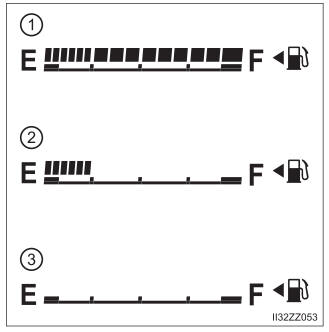Toyota Yaris: Brake System (other) / Brake System
Toyota Yaris XP210 (2020-2025) Reapir and Service Manual / Brake / Brake System (other) / Brake System
Precaution
PRECAUTION
NOTICE:
-
This vehicle is equipped with an SRS (Supplemental Restraint System). Failure to carry out service operations in the correct sequence could cause the SRS to unexpectedly deploy during servicing. This may cause a serious accident. Before servicing (including inspection, replacement, removal, and installation of parts), be sure to read the precautionary notices for the Supplemental Restraint System.
Click here

- Care must be taken to replace each part properly as it could affect the performance of the brake system and result in a driving hazard. Replace the parts with those having the same part number or equivalent.
- It is very important to keep parts and the area clean when repairing the brake system.
-
If the vehicle is equipped with a mobile communication system, refer to the precautions in the Introduction section.
Click here

 Installation
Installation
INSTALLATION PROCEDURE 1. INSTALL BRAKE PEDAL PAD (a) Install the brake pedal pad to the brake pedal support assembly. 2. INSTALL BRAKE PEDAL SUPPORT ASSEMBLY (a) Engage the 2 clamps to install the wire harness to the brake pedal support assembly...
 Vacuum Pump
Vacuum Pump
..
Other information:
Toyota Yaris XP210 (2020-2025) Reapir and Service Manual: Customize Parameters
CUSTOMIZE PARAMETERS CUSTOMIZE WIPER AND WASHER SYSTEM NOTICE: When the customer requests a change in a function, first make sure that the function can be customized. Be sure to make a note of the current settings before customizing. When troubleshooting a function, first make sure that the function is set to the default setting...
Toyota Yaris XP210 (2020-2025) Reapir and Service Manual: Precaution
PRECAUTION INITIALIZATION NOTICE: Before replacing the ECM, refer to Service Bulletin (for Immobiliser System). When the ECM is replaced, update the ECU security key. Click here WHEN USING GTS CAUTION: Observe the following items for safety reasons: Before using the GTS, read the instruction manual...
Categories
- Manuals Home
- Toyota Yaris Owners Manual
- Toyota Yaris Service Manual
- Battery Monitor Module General Electrical Failure (P058A01)
- Maintenance
- Diagnostic Trouble Code Chart
- New on site
- Most important about car
Fuel Gauge
The fuel gauge shows approximately how much fuel is remaining in the tank when the ignition is switched ON. We recommend keeping the tank over 1/4 full.

Copyright © 2025 www.toyaris4.com
